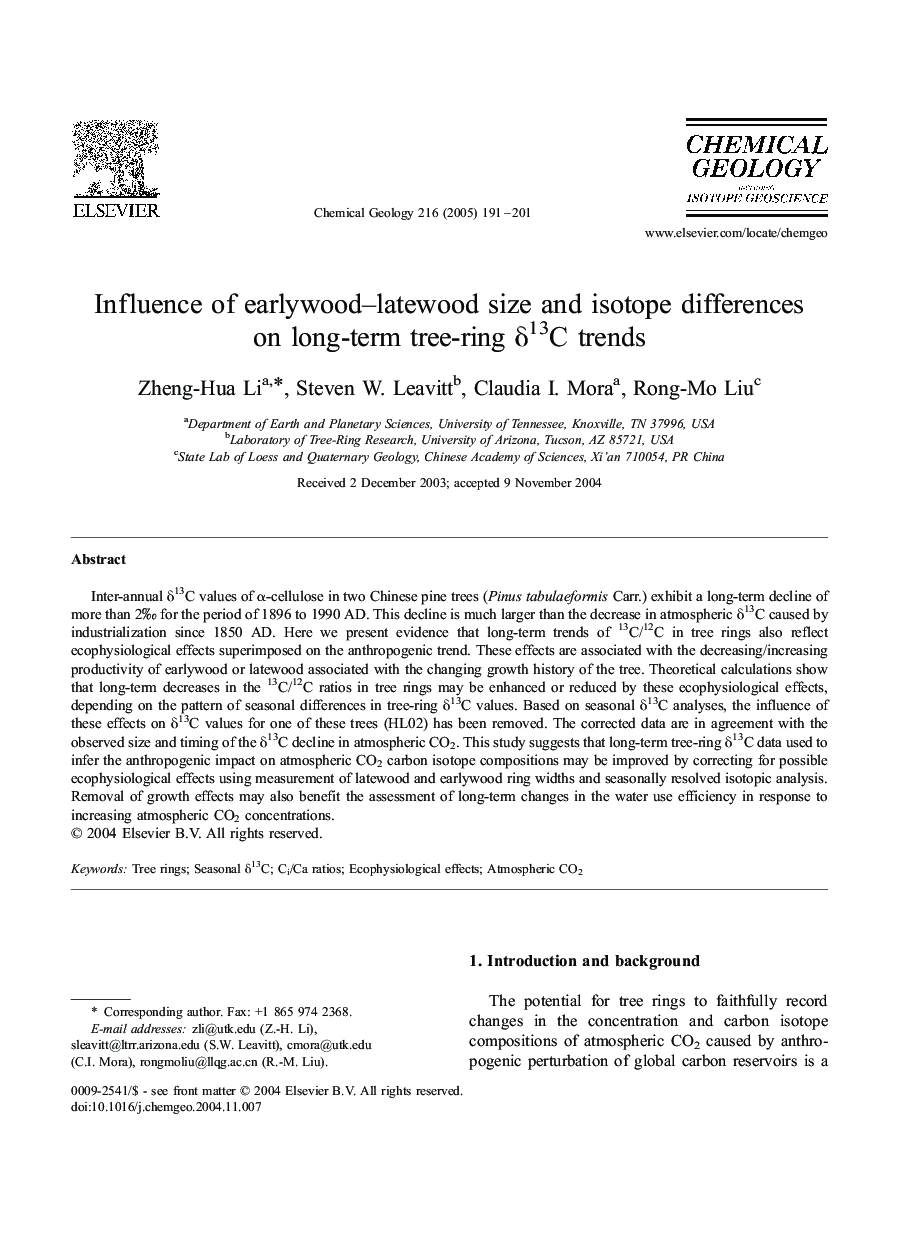| Article ID | Journal | Published Year | Pages | File Type |
|---|---|---|---|---|
| 9529159 | Chemical Geology | 2005 | 11 Pages |
Abstract
Inter-annual δ13C values of α-cellulose in two Chinese pine trees (Pinus tabulaeformis Carr.) exhibit a long-term decline of more than 2Ⱐfor the period of 1896 to 1990 AD. This decline is much larger than the decrease in atmospheric δ13C caused by industrialization since 1850 AD. Here we present evidence that long-term trends of 13C/12C in tree rings also reflect ecophysiological effects superimposed on the anthropogenic trend. These effects are associated with the decreasing/increasing productivity of earlywood or latewood associated with the changing growth history of the tree. Theoretical calculations show that long-term decreases in the 13C/12C ratios in tree rings may be enhanced or reduced by these ecophysiological effects, depending on the pattern of seasonal differences in tree-ring δ13C values. Based on seasonal δ13C analyses, the influence of these effects on δ13C values for one of these trees (HL02) has been removed. The corrected data are in agreement with the observed size and timing of the δ13C decline in atmospheric CO2. This study suggests that long-term tree-ring δ13C data used to infer the anthropogenic impact on atmospheric CO2 carbon isotope compositions may be improved by correcting for possible ecophysiological effects using measurement of latewood and earlywood ring widths and seasonally resolved isotopic analysis. Removal of growth effects may also benefit the assessment of long-term changes in the water use efficiency in response to increasing atmospheric CO2 concentrations.
Keywords
Related Topics
Physical Sciences and Engineering
Earth and Planetary Sciences
Geochemistry and Petrology
Authors
Zheng-Hua Li, Steven W. Leavitt, Claudia I. Mora, Rong-Mo Liu,
